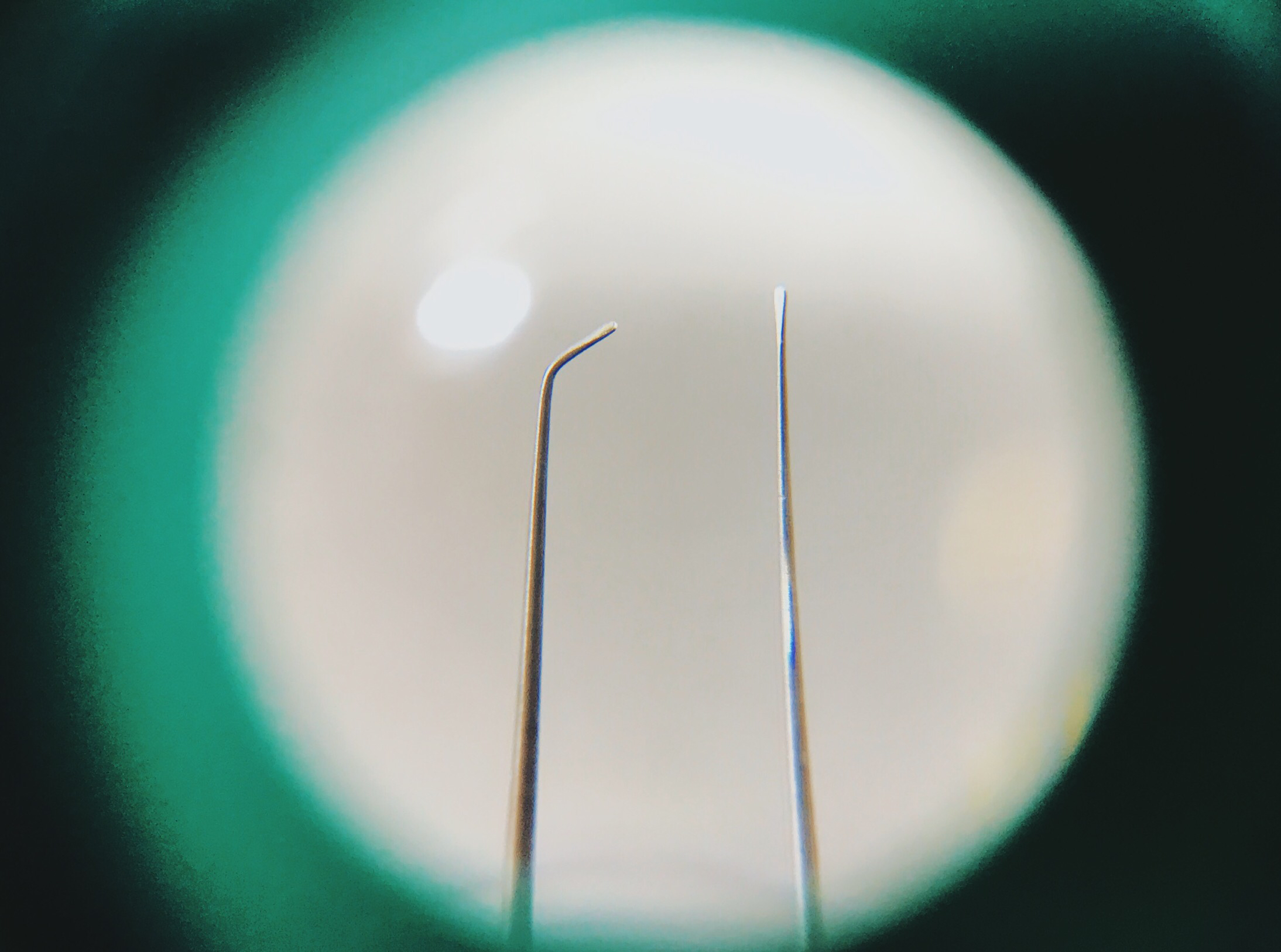Tools: Oilers

Oilers are one of a watchmaker's most-used tools, but they caught me by surprise as a student.
I knew that watches needed to be oiled, and I assumed that the tool to do so would resemble an oilcan or a fountain pen. Not so.
A manual oiler is little more than a glorified pin with a fancy tip. An oiler has a plastic handle, a long and thin shaft, and a shape resembling a spade at the end. Instead of injecting the lubricant, oilers simply use capillary action to deposit the oil into a movement. When you see the scale at which an oiler must work, it begins to make sense.
Oil typically goes into watch jewels, which are mostly less than 1 mm across. The oil cup is generally about half the diameter of a jewel, so the target is usually less than 0.5 mm wide. Oil cups shouldn't be filled to overflowing, so now the target is down to about 0.3 mm... And no oil is allowed to get on the jewel outside of the oil cup, so be careful!
Watch movements use a variety of oils of different viscosities for different areas. High-torque, high-friction areas use grease, while low-torque, high-frequency pivots use the lightest possible oil. Grease can be "painted" on to parts, while the oils used for balance and escapement jewels are so thin that they can be hard to even pick up with the tool.
The flat tip of an oiler provides a plane for the capillary action to draw oil up and out of the reservoir, while also allowing it to flow easily down into a jewel. Different jewels require different shapes, and we use a grinding stone to alter the geometry.
You'll notice that one of my oilers is bent. This was actually a mistake—I knocked it off my bench with my sleeve—but it's a useful and common modification. Straight oilers are very precise, but your sight lines can be blocked by your hands. Bent oilers allow you to move your hands out of the way for greater precision.
Regardless of an oiler's shape or size, it must be used precisely. Just as capillary action draws oil down from an oiler into an oil cup, oil on the "flats" of a jewel will suck the lubricant away from the pivot, causing damage. No mess is allowed. It's a tricky affair.
I'll cover oiling more in the future, and we haven't even gotten to automatic oilers yet.
Watchmaking student at the Lititz Watch Technicum, formerly a radio and TV newswriter in Chicago.





